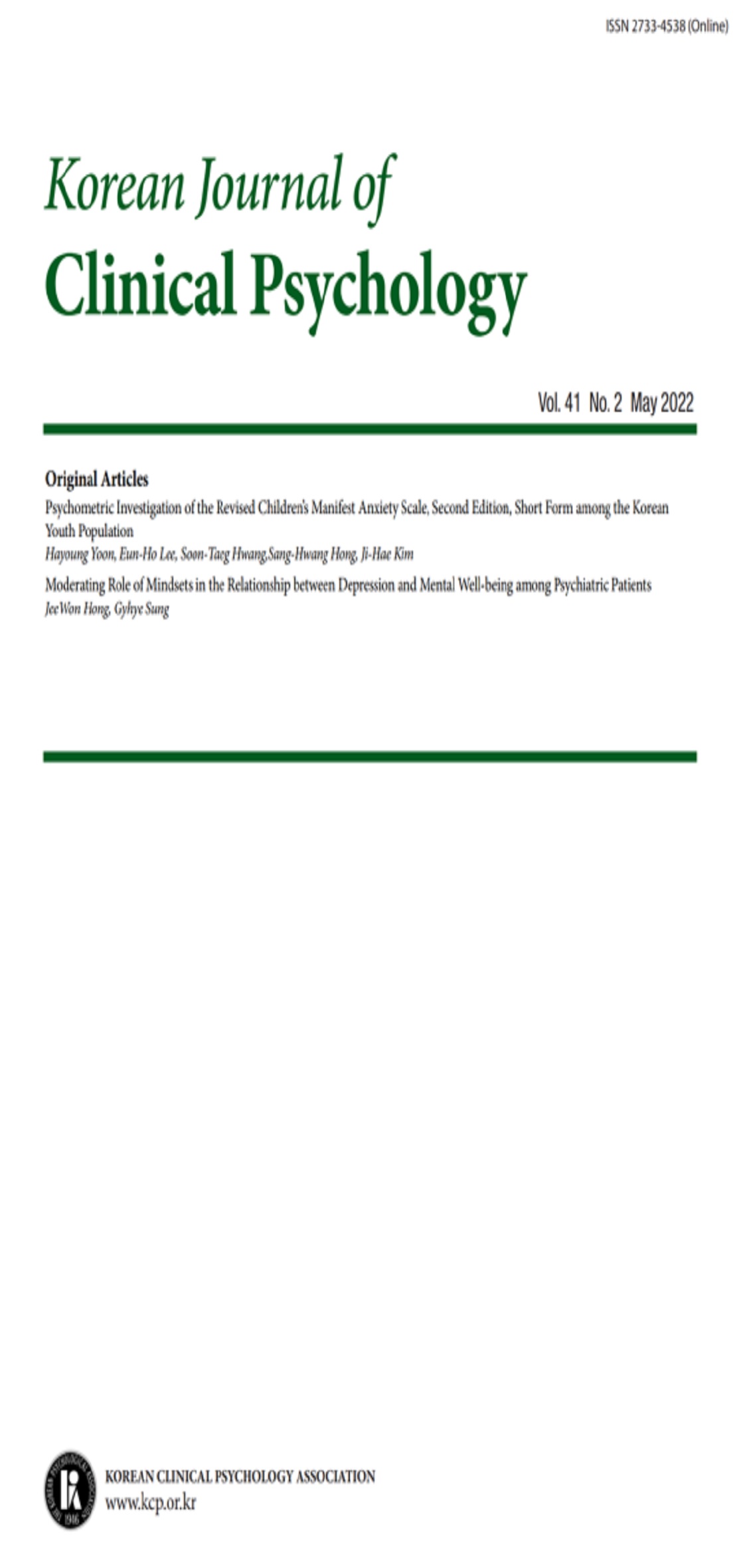open access
메뉴
open access
메뉴 E-ISSN : 2733-4538
E-ISSN : 2733-4538

본 연구는 한국판 청소년용 미네소타 다면적 인성검사 (MMPI-A)의 임상적 유용성을 검토하기 위해 이루어졌다. 이를 위해 85명의 한국 청소년 정신과 환자의 MMPI-A 결과를 254명의 한국 정상 청소년집단과 713명의 미국 청소년 정신과 환자집단의 MMPI-A 프로파일과 비교하였다. 척도 수준과 문항수준의 비교를 실시한 결과, 한국판 청소년용 미네소타 다면적 인성검사가 정상집단과 임상집단을 변별하는데 유용한 것으로 나타났다. 한국 청소년 정신과 환자집단의 MMPI-A 척도 평균점수는 정상 청소년집단보다 높게 나타났는데, 특히 F, D, Hy, Pd, Pa, Hs, DEP, HEA, FAM 척도에서는 1 표준편차 이상의 차이가 관찰되었다. 한국 청소년정신과 환자들의 MMPI-A 척도 평균점수는 미국 청소년 정신과 환자들보다 높았는데, 특히 F, Hs, D, Hy, A-hea, A-sod 척도들에서 점수가 가장 크게 나타났다. 또한 한국 청소년행동장애 환자집단과 우울증 환자집단, 그리고 정상 청소년 집단간의 변별에서는 Pd와 D척도가 유용하였다. 행동장애나 우울증 집단 뿐 아니라 모든정신과 환자집단에서 신경증 척도들(Hs, D, Hy)의 점수가 높게 나타나이들 세 척도 점수들의 상승이 한국 청소년정신과 환자집단 전체에서 관찰되는 공통적인 특징인 것으로 고려된다. 미국과 한국 청소년 정신과 환자집단의 MMPI-A 응답을 비교한 결과, 사회문화적 차이가 반영된 것으로 보였다. 마지막으로 본 연구의 제한점과 후속 연구를 위한 제안 사항들이 논의되었다.
The current study was conducted to examine the utility of the Korean MMPI-A in discriminating between normal and abnormal adolescents and among different diagnostic groups. MMPI-A profiles of 85 Korean adolescent psychiatric patients were compared with those of 254 Korean adolescents and 713 American adolescent psychiatric patients. Results suggested that the Korean MMPI-A seems to be sensitive to separate general psychiatric sample from a normal group as indicated by scale level and item level comparisons. Scale means of Korean psychiatric sample were significantly higher than those of Korean normal group, with the scales F, D, Hy, Pd, Pa, Hs, DEP, HEA, and FAM showing over one standard deviation separation between the two Korean adolescent groups. Mean scores of Korean psychiatric sample were higher than those of American counterpart, with the scales F, Hs, D, Hy, A-hea, and A-sod showing the highest differences between two national samples. Scales Pd and D were effective in discriminating among conduct disorder group, depression group, and normal sample. For both diagnostic groups as well as total psychiatric sample, neurotic scales (Hs, D, and Hy) were elevated, suggesting neurotic triad may be an underlying or comorbid characteristic in all Korean adolescent psychiatric patients. Compared to normal adolescents, adolescent patients with conduct disorder more frequently reported to have school and family problems and those with depression reported more physical complaints, negative mood, isolation, and pessimism. Comparisons between American and Korean adolescent clinical samples suggested some sociocultural factors. Finally limitations of this study and suggestions for further studies were also discussed.
